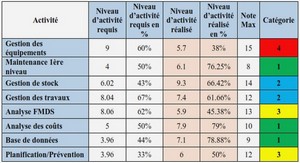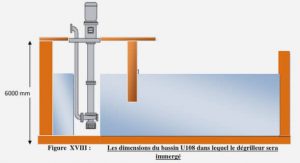ETUDE D’UN PROBLÈME MULTIPOINTS EN RÉSONNANCE PAR LA THÉORIE DU DEGRÉ DE COÏNCIDENCE
Fixed point theorems
The Banach contraction principle, established in 1922 by the Polish mathematician Stefan Banach, is one of the most significant results in analysis and is considered the main source of the metric fixed point theory. The important part of Banachís contraction is to stretch the existence, the uniqueness and the sequence of the successive approximation that converges to a solution of the problem. For more results we refer to [1, 3, 5, 6, 28, 30, 51]. Definition 1 Let (X; d) be a metric space and let f : X ! X be a mapping. A point x 2 X is called a fixed point of f if x = f(x): Definition 2 f is called contraction if there exists a fixed constant k < 1 such that d(f(x); f(y)) kd(x; y); for all x; y 2 X: Theorem 3 (Banach Contraction Principle) Let (X; d) be a complete metric space, then each contraction map f : X ! X has a unique fixed point. Proof. Let x and y be fixed points of f, then d(x; y) = d(f(x); f(y)) kd(x; y): Since k < 1, we get x = y; that the uniqueness holds. Now, we will construct explicitly a sequence converging to the fixed point. Let x0 be an arbitrary but fixed element in X. Define a sequence of iterates (xn)n2N in X by xn = f(xn
Perturbations of a Fredholm operator of zero index L-compact To solve the equation Lx = y; we can write x = P x+(I
Mawhinís theorem Theorem
Let L be a Fredholm operator of index zero and let N be L-compact on . Assume that the following conditions are satisfied. Theorem 39 (i) Lx 6= Nx, for every (x; ) 2 [(D(L)nKerL) \ @ ] (0; 1). (ii) Nx =2 ImL, for every x 2 KerL \ @ . (iii) deg(JQNj ker L; kerL \ @ ; 0) 6= 0, where J : ImQ ! kerL is a linear isomorphism, Q : Y ! Y is a projection as above with ImL = ker Q. Then, the equation Lx = Nx has at least one solution in D(L) \ . Proof. For 2 [0; 1], consider the family of problems x 2 D(L) \ ; Lx = Nx + (1
On some boundary value problems at resonance
In this chapter we collect some interesting results for various classes of second boundary value problems at resonance. More precisely, we will summarize basic results in the literature related, and present the main ideas of some researches in resonant boundary value problems. we omit the corresponding proofs. 3.2 A Second order m-point boundary value problem at resonance Gupta in [25], used Mawhin coincidence degree theory, to investigate the existence of solutions for the following two boundary value problem at resonance, (P1) ( u 00(t) = f(t; u(t); u0 (t)) + e (t); t 2 (0; 1); u(0) = 0; u0 (1) = u 0 () 30 3.2. A SECOND ORDER M-POINT BOUNDARY VALUE PROBLEM AT RESONANCE31 (P2) 8 < : u 00(t) = f(t; u(t); u0 (t)) + e (t); t 2 (0; 1); u(0) = 0; u0 (1) = mP
1 Introduction |






